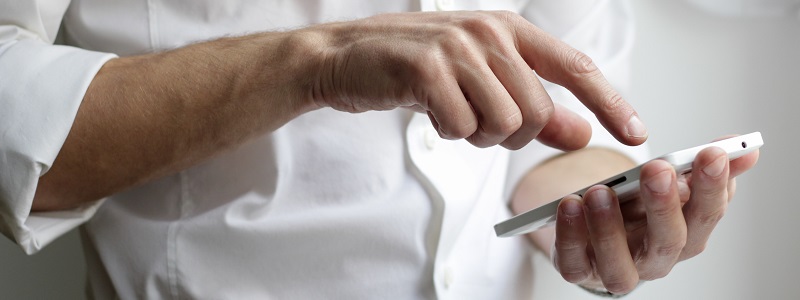Baby boomers probably don’t have to worry. We grew up in a different time. Maxwell Smart had his shoe phone. Mobile phones were imagined in science fiction.
Today’s young people cannot be surgically separated from their smart phones, it seems.
Look at these statistics about mobile phone use from a 2017 AARP bulletin:
- 70% of people sleep with their smartphone
- 58% check their phone in the middle of the night
- 40% look at their phones within 5 minutes of waking up
- 35% check their phones while having sex
That adds up to the average person looking at their phone 150 times a day, and the average teen sending 3,000 texts a month!
What is compelling us to use them so much?
Are we overusing them?
Could we be addicted?
A new term has been coined: Nomophobia. It is the fear of, or anxiety about, not having or being able to use your cell phone. There is a questionnaire to help determine how severe this anxiety can be. It was developed for a study by Yildirim & Correia in 2015.
Where are you on the scale?
We use our phones to call and text, but we also use our phones now more than computers to access the internet.
Dr. Kimbery Young is an internationally known expert on internet addiction. She shares signs of internet addiction that include being preoccupied with getting and being on the internet, needing to spend more and more time using it in order to feel satisfied, and repeatedly making unsuccessful attempts to control or stop internet use. Oftentimes, this leads to moodiness, irritablity when not using the internet and escaping problems by being on the internet. It may even progress to lying about internet use when those concerned ask about it.
As in any addiction, there are health consequences to overuse or addiction to the use of phones and the internet. There are mental, emotional and physical detrimental effects. Sleep can be affected. Who knows cause and effect, but it can spawn other compulsive or addictive behaviors or can simply be a symptom of that tendency for addiction in the person’s life.
In children, technology use can stunt proper development. Dr. Kimberly Young has published Smart Screen Guidelines for Children that may surprise you, but did not surprise me. My mentor, Dr. Gueniot, insisted that young children should not watch TV because of the detrimental effects on development. He would be shocked at toddlers holding and using cell phones.
A 2014 study showed the brain changes of internet addicts parallel those in addicts to cocaine, alcohol, heroin, and meth. In addition, there was evidence of disruption of brain pathways relating to emotions, decision-making and self-control.
There is good news.
In South Korea, where technology is everywhere and the internet is all-pervasive, you can imagine there is some gaming addiction. An intervention with gaming addicts from 11 to 12 years old proved successful in two one-day trips to the forest. Just in those two days, the kids had lowered cortisol, a stress hormone, and scored higher on measures of self-esteem.
The Technology Wellness Center has some tips and strict protocols for helping teens unplug and get healthy. Digital disruption is a technique of removing all screens from teen use outside of the classroom for 30 days, then re-introducing them in a limited way.
For the rest of us, it could be useful to limit our use by:
- never having a phone within view when driving or eating a meal
- do not have phones or other electronic devices in the bedroom
- do not use your smartphone as an alarm clock
- turn off as many notifications as possible on your phone
- finding other things to do that do not involve a screen
Then, there is the healing power of Nature. We all have probably experienced that walking in nature is calming and restorative. A study confirmed this, if you had to have some other proof. This study showed that walking itself was not the restorative piece, because walking down a busy street was not calming and restorative. It was being in Nature.
And there is play.
It is about plugging back into life. Interacting with people, talking in person, doing activities together, even friendly competition is play. Our work can be play and we can play with more than emojis.Our whole life can be play when we are involved with our friends, family, and community.
How do you play?
How much are you dependant on your phone and technology?
Do you wish to change?
Please comment below.





